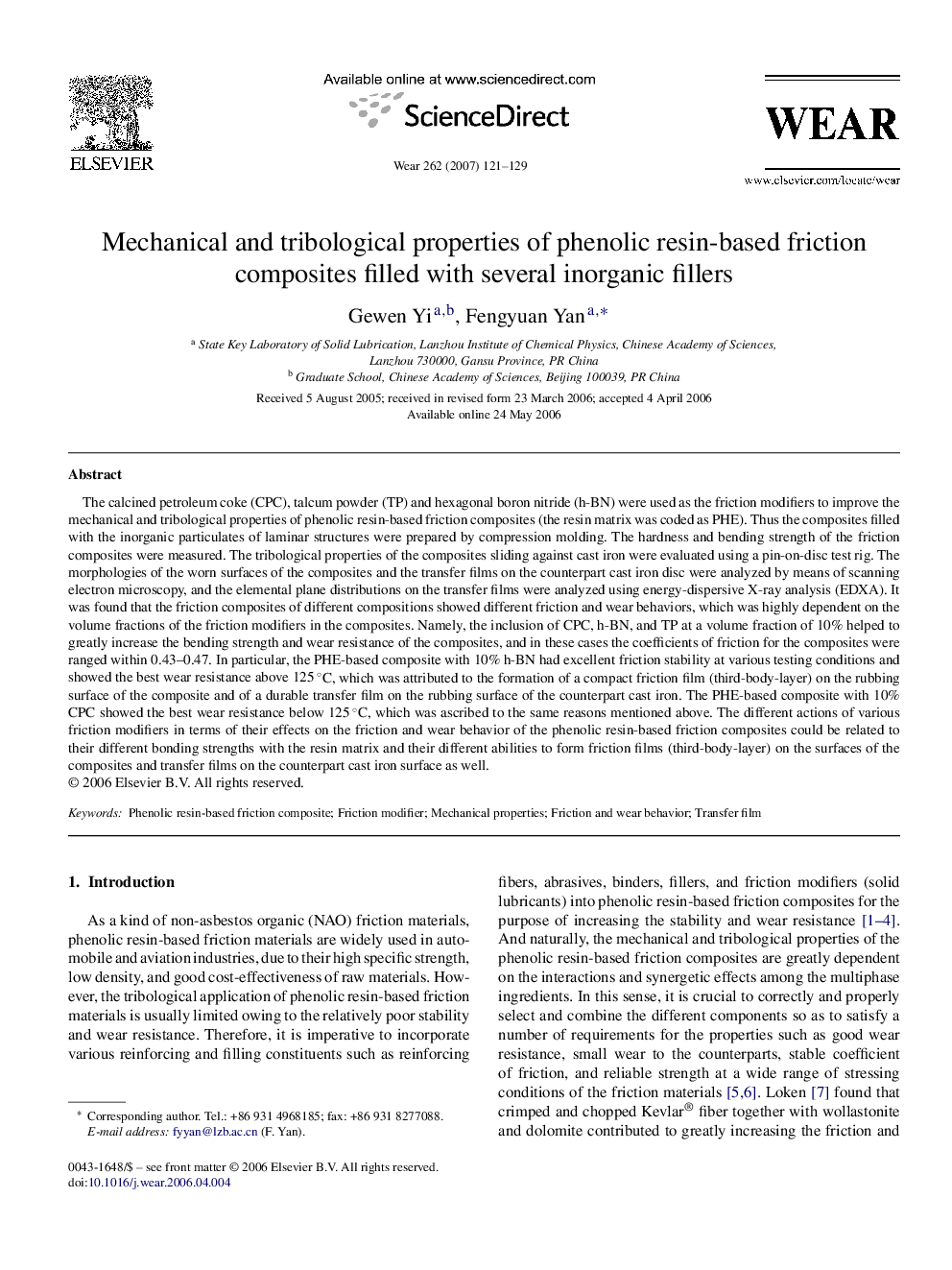| کد مقاله | کد نشریه | سال انتشار | مقاله انگلیسی | نسخه تمام متن |
|---|---|---|---|---|
| 619489 | 1455070 | 2007 | 9 صفحه PDF | دانلود رایگان |

The calcined petroleum coke (CPC), talcum powder (TP) and hexagonal boron nitride (h-BN) were used as the friction modifiers to improve the mechanical and tribological properties of phenolic resin-based friction composites (the resin matrix was coded as PHE). Thus the composites filled with the inorganic particulates of laminar structures were prepared by compression molding. The hardness and bending strength of the friction composites were measured. The tribological properties of the composites sliding against cast iron were evaluated using a pin-on-disc test rig. The morphologies of the worn surfaces of the composites and the transfer films on the counterpart cast iron disc were analyzed by means of scanning electron microscopy, and the elemental plane distributions on the transfer films were analyzed using energy-dispersive X-ray analysis (EDXA). It was found that the friction composites of different compositions showed different friction and wear behaviors, which was highly dependent on the volume fractions of the friction modifiers in the composites. Namely, the inclusion of CPC, h-BN, and TP at a volume fraction of 10% helped to greatly increase the bending strength and wear resistance of the composites, and in these cases the coefficients of friction for the composites were ranged within 0.43–0.47. In particular, the PHE-based composite with 10% h-BN had excellent friction stability at various testing conditions and showed the best wear resistance above 125 °C, which was attributed to the formation of a compact friction film (third-body-layer) on the rubbing surface of the composite and of a durable transfer film on the rubbing surface of the counterpart cast iron. The PHE-based composite with 10% CPC showed the best wear resistance below 125 °C, which was ascribed to the same reasons mentioned above. The different actions of various friction modifiers in terms of their effects on the friction and wear behavior of the phenolic resin-based friction composites could be related to their different bonding strengths with the resin matrix and their different abilities to form friction films (third-body-layer) on the surfaces of the composites and transfer films on the counterpart cast iron surface as well.
Journal: Wear - Volume 262, Issues 1–2, 4 January 2007, Pages 121–129